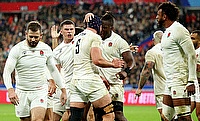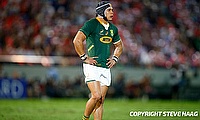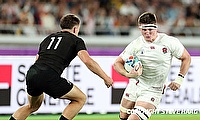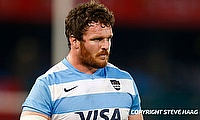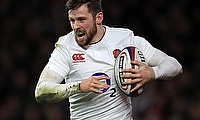Will Breakdown Issues Stall England's New Dawn?
Wednesday 1 February 2012
The breakdown, the key battlefield of modern rugby, an area where the majority of games are won and lost. If a side can gain supremacy in this area they are able to control the tempo of the game and will almost certainly go onto to claim victory.
Once again the importance of the breakdown was highlighted in the group stages of this seasons Heineken Cup.
The three Irish provinces Leinster, Munster and Ulster lost just twice from a total of 18 matches. Compare that with English sides who suffered 21 defeats from their 42 matches, and produced just one qualifier for the quarter-finals, Saracens.
It is no coincidence that the Irish sides that have flourished this season have mastered the control of the breakdown. Take the game between Ulster and Leicester at Ravenhill, a night which saw the Belfast men hand the Tigers their heaviest defeat in European competition.
That game saw the double champions taught a brutal lesson at the breakdown. Stephen Ferris and Chris Henry, the Ulster six and seven, were the standout performers. In defence they nullified every attack with bruising hits, turnovers, but more importantly they were able to slow down the ball almost to a standstill. In attack they were able smash the Tigers back-row off the ball with ease, which allowed Ruan Peinnar to run the show and unleash the likes of Andrew Trimble.
The 41-7 score line was completely justified. This result was then compounded by what followed in Milton Keynes a week later. This time it was Northampton who were schooled in the dark arts of the ruck. Munster rolled into town and put 50 points on the 2011 finalists.
The teams were different but the storyline almost identical, just replace Henry and Ferris with Donnacha Ryan, Peter O'Mahony and James Coughlan. The Munster back-row gave Ronan O'Gara an armchair ride, and he is the master of putting a team to the sword.
English teams seem incapable of slowing the opposition down or speeding their own ball up. At the top level this kills you, as Ulster and Munster proved. The reason for this is glaringly obvious; there are hardly any natural opensides in England.
Every top side has a terrier at the breakdown whether it's Richie McCaw, David Pocock, Sam Warburton, Thierry Dusautoir or Heinrich Brussow. There hasn't been an Englishman on that list since Neil Back.
There are plenty six-and-a-half's and one those will lead England out at Murrayfield, Chris Robshaw. There is no doubting that Robshaw has the potential to be a top player and merits his place in the team, but it's hard to see him becoming the fetcher that Stuart Lancaster needs at the breakdown.
Andy Saull is probably the best option at seven, but at the moment the Saracens man is stuck in the Saxons squad and doesn't look likely to get a game. Unless Robshaw is injured or Tom Wood doesn't return before the end of the Six Nations.
England need to be intense, and match the intensity that other sides bring to the ruck. The Heineken Cup showed that English players aren't as ferocious as their Celtic counterparts when it comes to clearing the ruck, getting over the ball and producing quick ball. If they are not intense and extremely physical they will struggle to build any kind of momentum.
They have to play to their strengths, there are some very good footballers in the pack. The likes of Robshaw, Ben Morgan, Tom Croft and Tom Palmer are very good with ball in hand. Playing a Harlequins style of game with lots of offloading to keep the ball away from the ruck is sensible. The players are there to do it, and the pacey backs will thrive on front foot ball.
Stuart Lancaster has some big decisions to make about the way England will go about their game in the next month or so. The Heineken Cup has highlighted that English teams have struggled at the breakdown, they need to move away from their traditional style of play. Breaking the shackles and using the ball is the only way forward. A battle in the trenches is no longer the way for England to go. Spreading their wings is the best way to start this new era.

